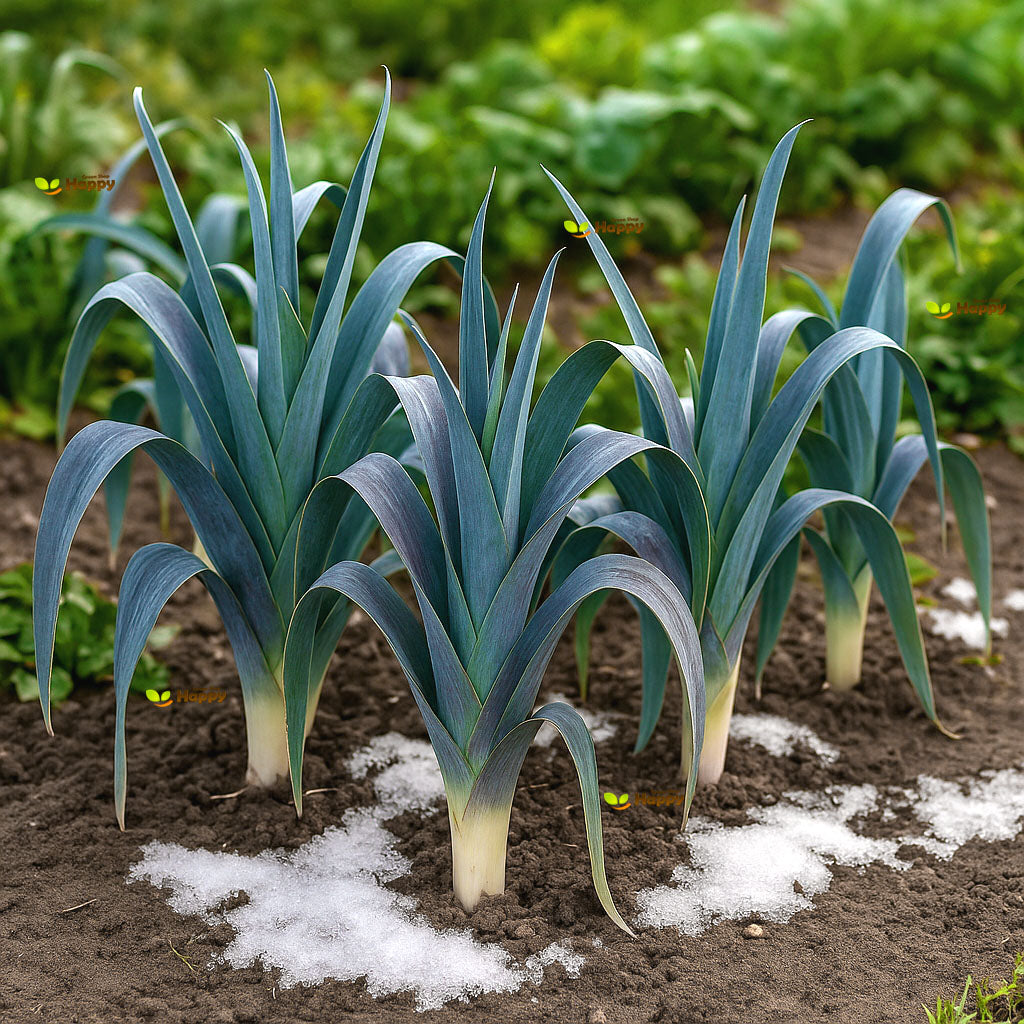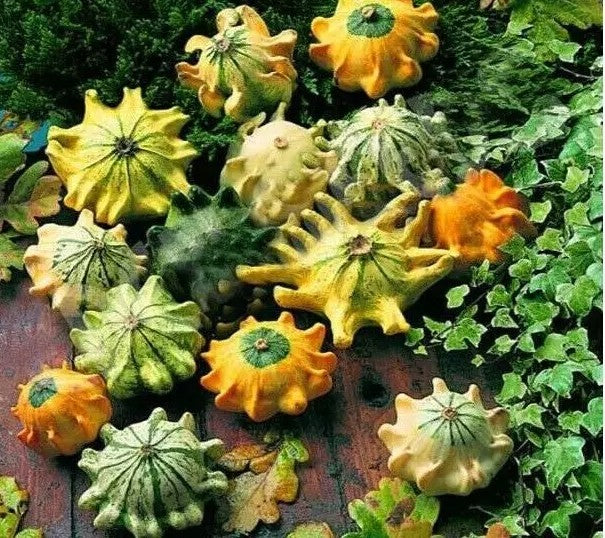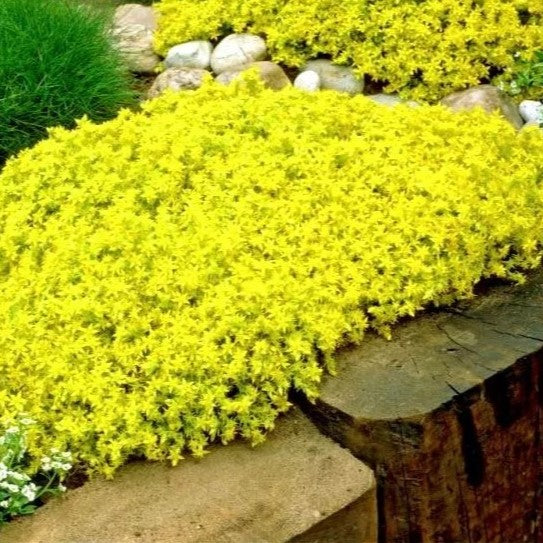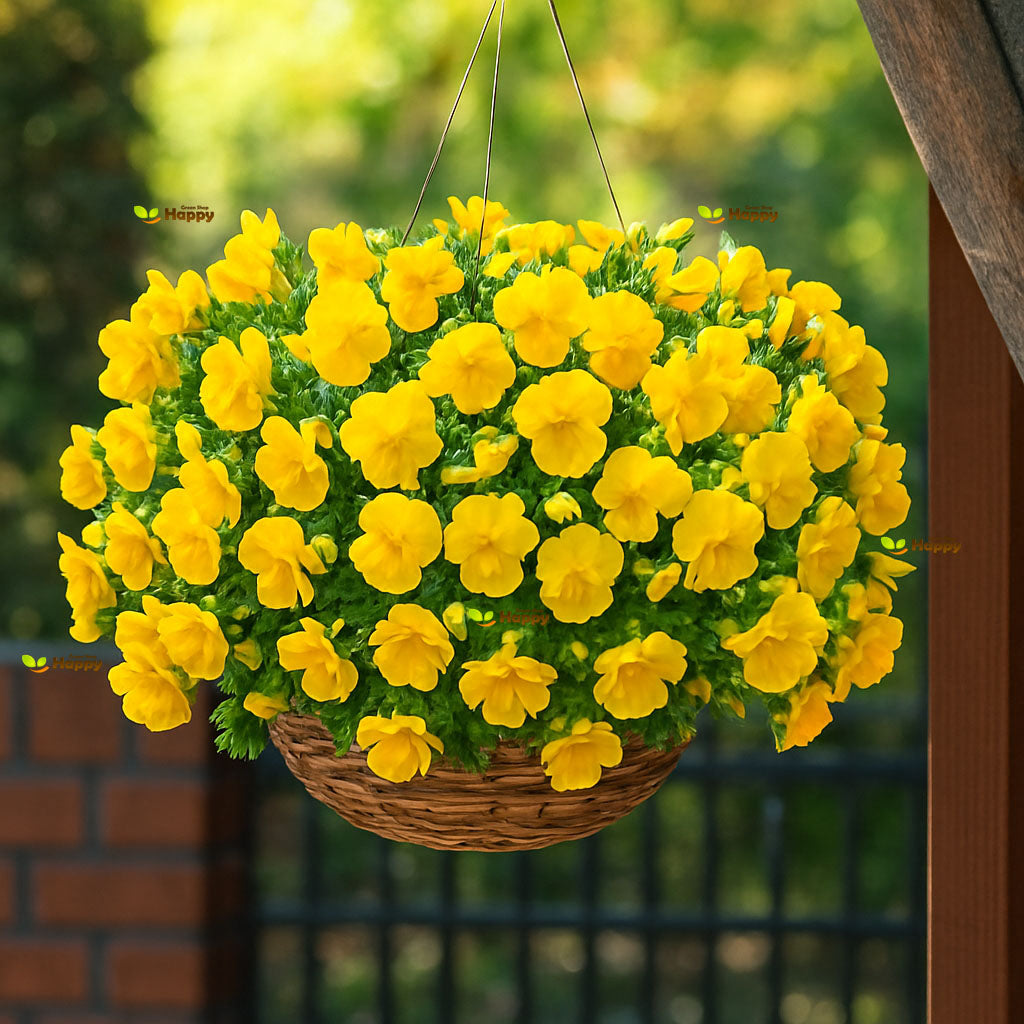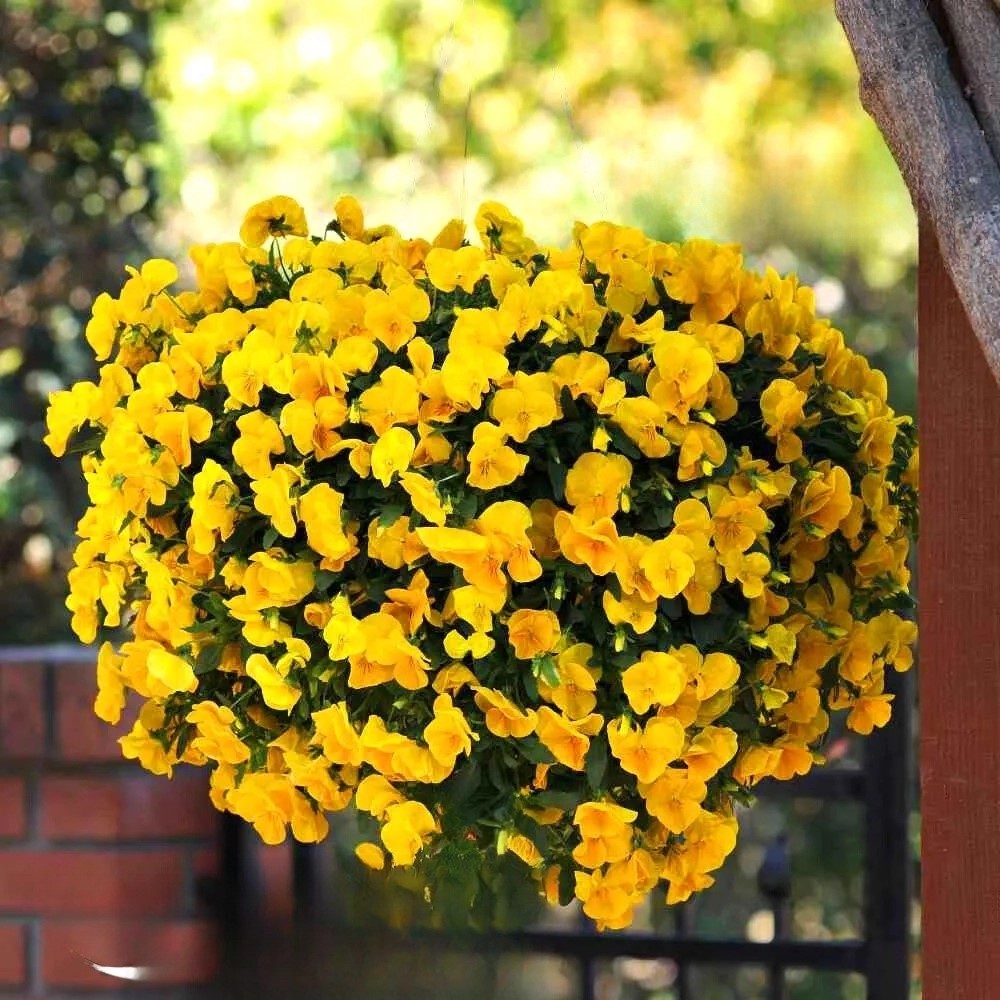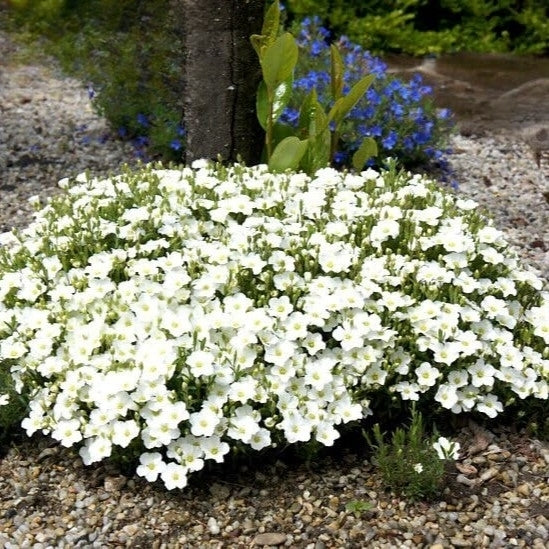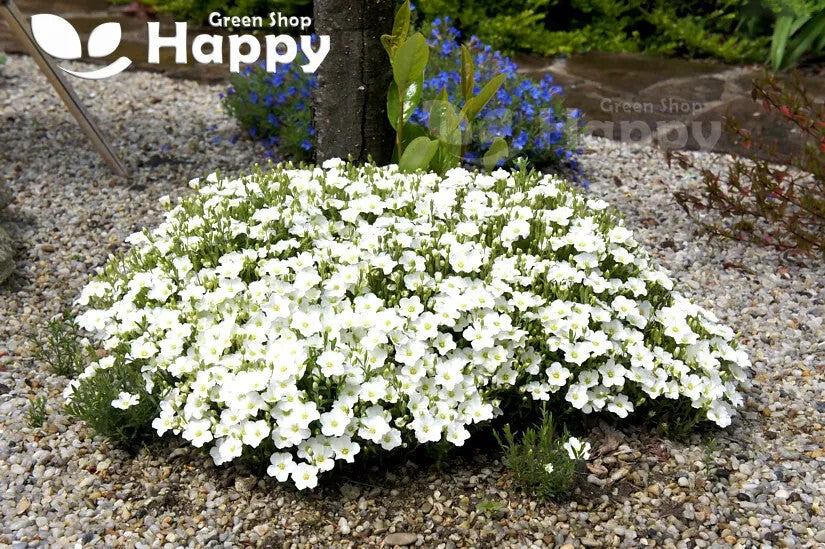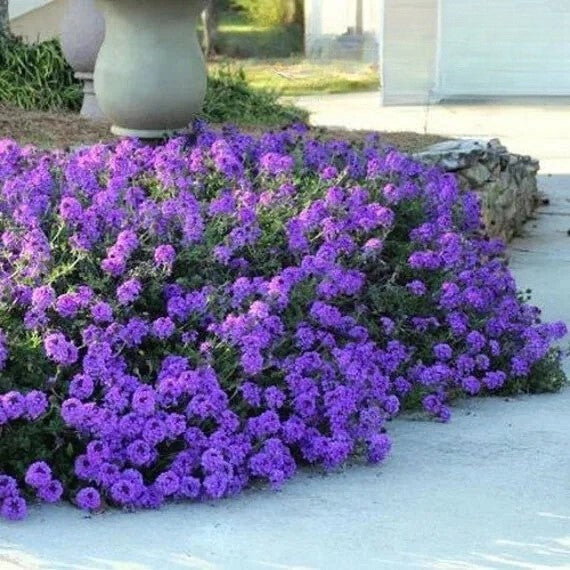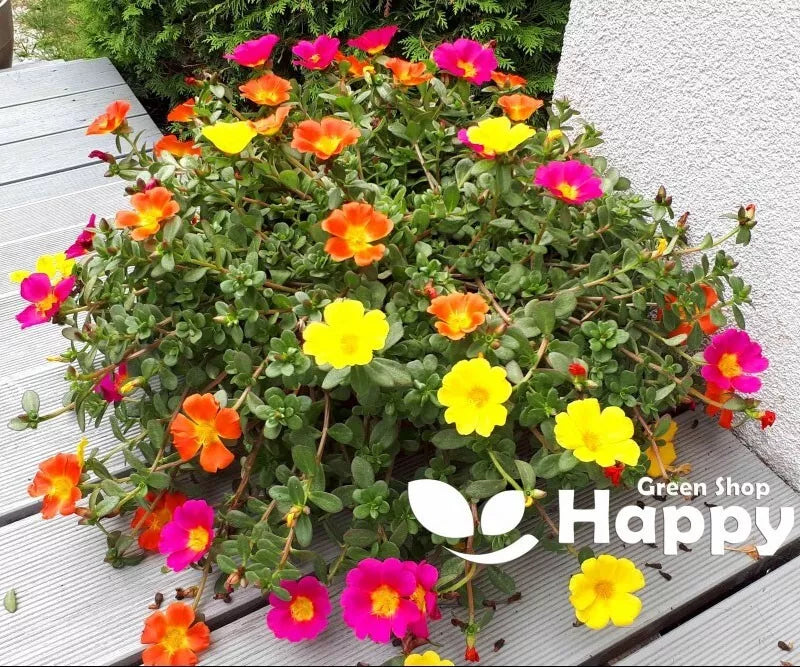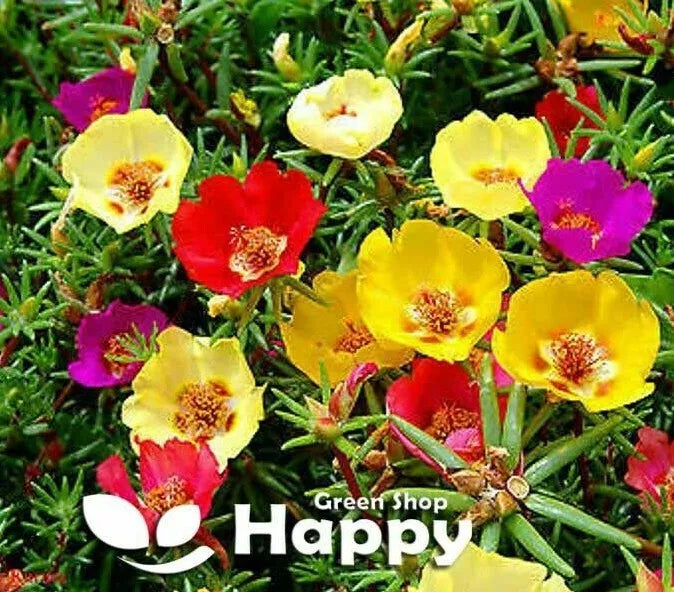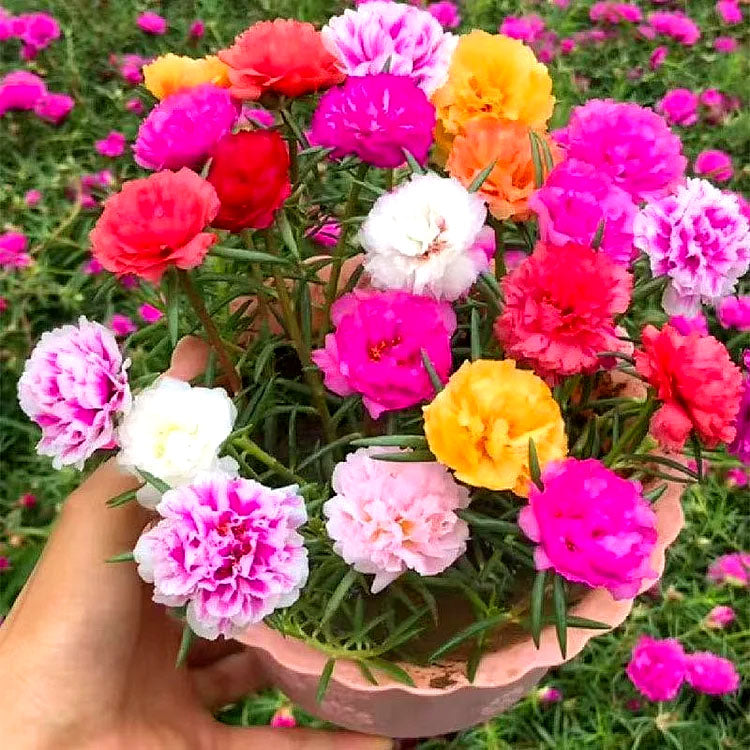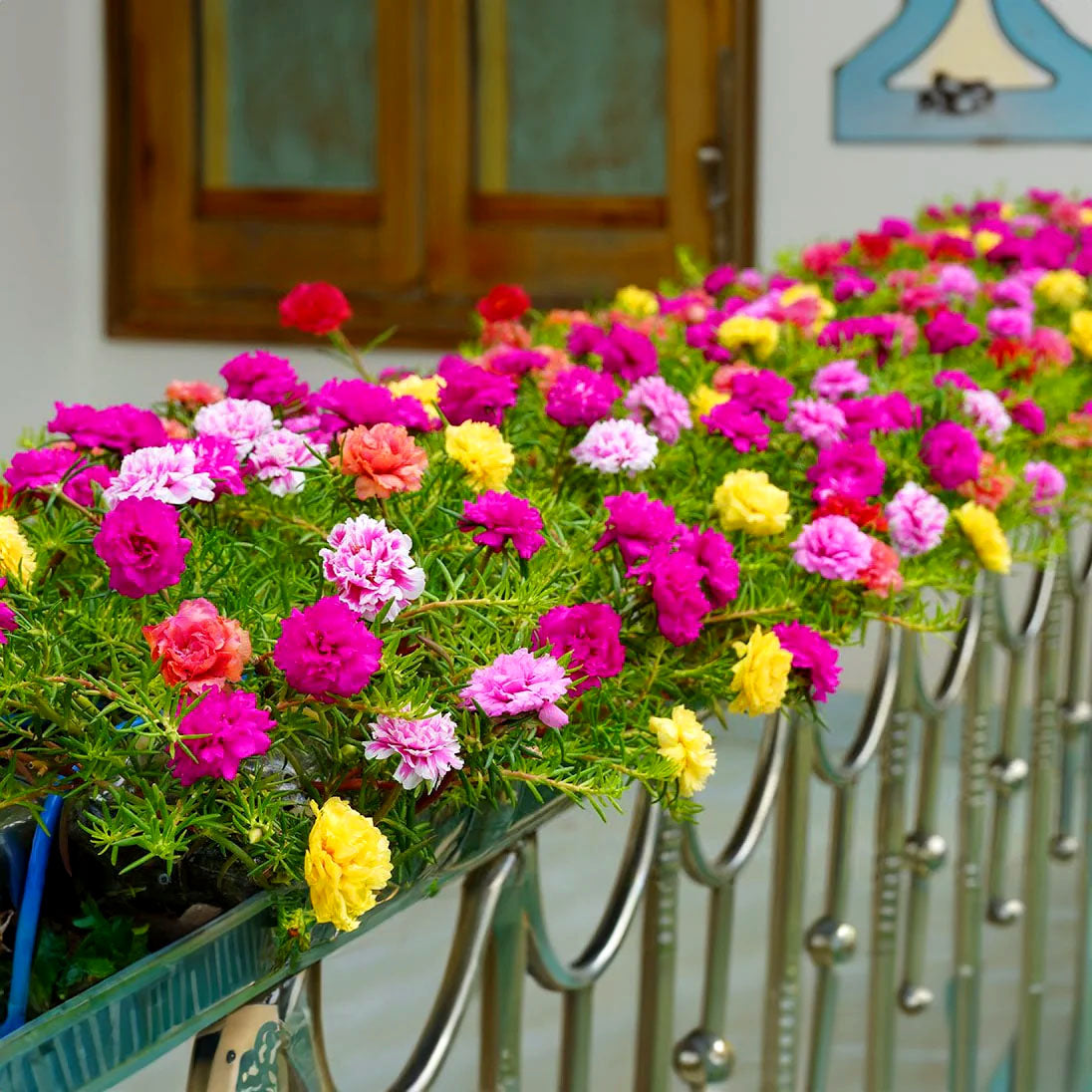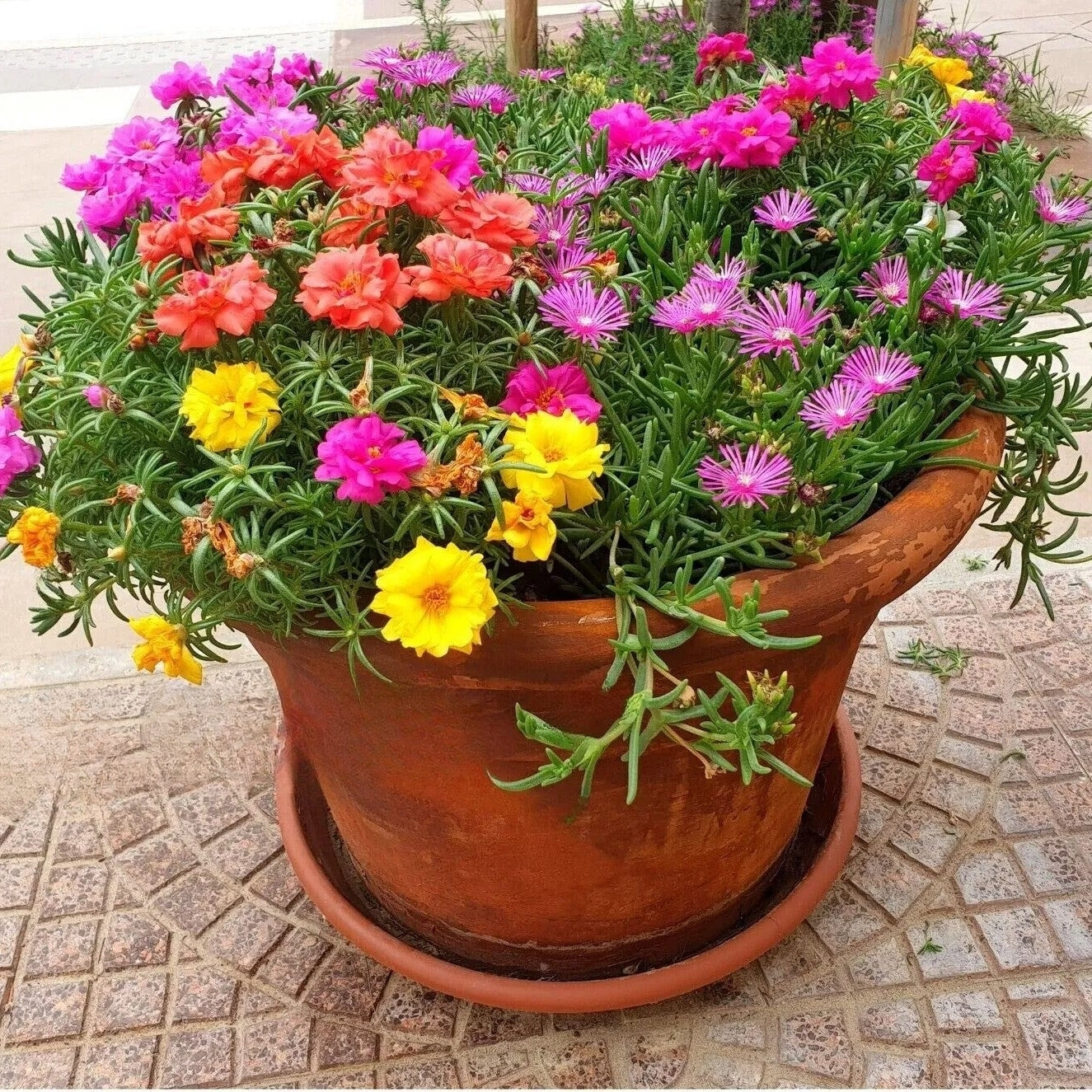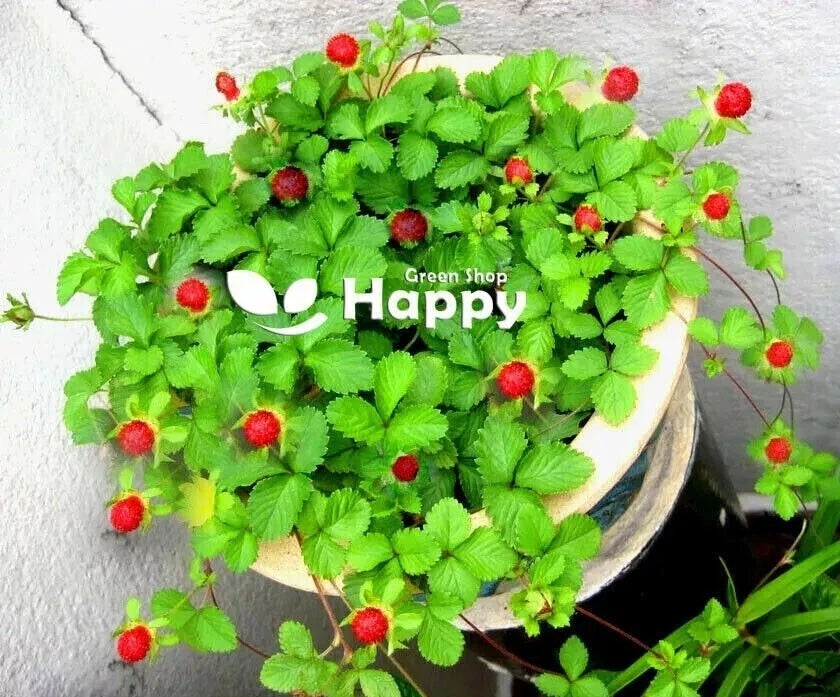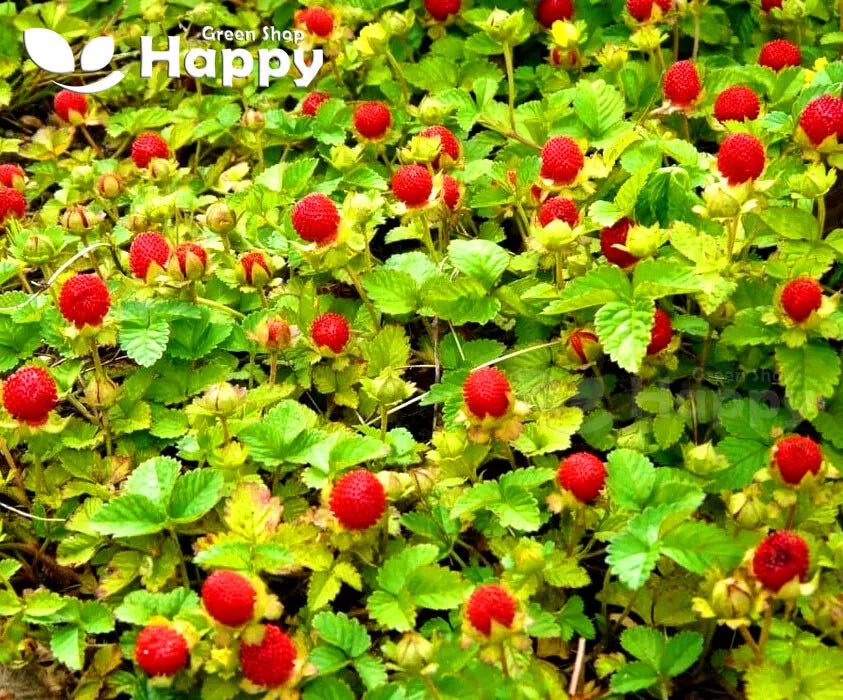Sort by:
51 products
51 products
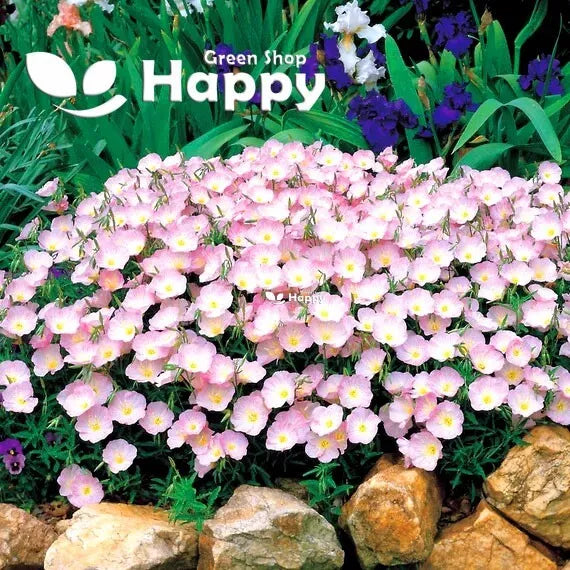
Primrose Flower "Showy Evening" - Silky Orchid Pink - 1000 seeds (Oenothera speciosa)
£1.15
Unit price perPrimrose Flower "Showy Evening" - Silky Orchid Pink - 1000 seeds (Oenothera speciosa)
£1.15
Unit price perPrimrose Flower ‘Showy Evening’ – Silky Orchid Pink – Seeds (Oenothera speciosa)
Primrose Flower ‘Showy Evening’ (Oenothera speciosa) is a charming perennial featuring silky orchid-pink flowers with a delicate, evening-blooming fragrance. Blooming from late spring to early summer, it forms a low-growing carpet of blooms perfect for borders, rockeries, and cottage gardens. Hardy, low-maintenance, and drought-tolerant, this primrose attracts pollinators and adds soft, romantic color to your garden.
Why Grow "Showy Evening"
-
Silky orchid-pink flowers with evening fragrance
-
Long flowering season from late spring to early summer
-
Hardy, low-maintenance, and drought-tolerant perennial
-
Pollinator-friendly and ideal for ground cover
Key Features
-
Type: Perennial (Oenothera speciosa)
-
Height: 20–30 cm
-
Flowering: Late spring to early summer
-
Position: Full sun to partial shade
-
Uses: Borders, rockeries, cottage gardens, ground cover, pollinator-friendly gardens
Ideal For
-
Ground cover and low-growing flower beds
-
Cottage and rock gardens
-
Pollinator-friendly planting schemes
-
Adding soft, romantic color to borders and edges
Sowing & Growing
-
Sow indoors: February–April in trays or pots
-
Sow outdoors: April–May after frost
-
Germination: 10–20 days at 18–22°C
-
Thin seedlings 25–30 cm apart
-
Prefers well-drained soil in full sun to partial shade
-
Water moderately until established
Pansy Trailing Yellow Seeds (Viola williamsii pendula)
The Pansy Trailing Yellow (Viola williamsii pendula) is a cheerful and versatile variety, producing an abundance of bright yellow blooms that spill gracefully over baskets, containers, and window boxes. Its trailing habit makes it perfect for adding cascades of color to outdoor displays from spring through autumn.
What Makes It Special
-
Masses of golden-yellow flowers
-
Naturally trailing growth – ideal for hanging baskets
-
Long blooming season with minimal care
Key Features
-
Botanical name: Viola williamsii pendula
-
Hardy annual / short-lived perennial
-
Height: 15–20 cm
-
Spread / trail: 30–40 cm
-
Flowering: Spring to autumn
Ideal For
-
Hanging baskets and window boxes
-
Containers and patio pots
-
Bedding and ground cover
Sowing
-
Sow indoors: February–April in trays, cover lightly
-
Germination: 10–14 days at 15–20°C
-
Transplant outdoors after frost, 20 cm apart
-
Prefers sun or partial shade and well-drained soil
Mountain Daisy White – Seeds (Arenaria montana white)
A charming alpine perennial, Mountain Daisy White forms neat, low cushions covered in masses of pure white blooms. Perfect for rock gardens, edging, and containers, it adds a fresh touch of brightness while being hardy and easy to maintain.
Why Grow Mountain Daisy White
-
Profusion of brilliant white flowers in late spring to summer
-
Compact, spreading habit ideal for ground cover
-
Low-maintenance and drought-tolerant once established
-
Long-lived alpine beauty
Key Features
-
Type: Perennial
-
Height: 15–20 cm
-
Flowering: May–July
-
Position: Full sun, well-drained soil
-
Uses: Rock gardens, borders, edging, containers
Ideal For
-
Rockeries & alpine gardens
-
Ground cover planting
-
Container displays
-
Bright edging for paths or borders
Sowing & Growing
-
Sow indoors: February–April in trays with light cover
-
Germination: 14–21 days at 18–20°C
-
Transplant when seedlings are large enough to handle
-
Plant out after last frost, spacing 20 cm apart
-
Prefers sunny, well-drained sites
Moss Verbena – Bright, Low-Growing Blooms
Moss Verbena (Verbena tenuisecta) produces a carpet of delicate, star-shaped flowers in shades of purple, pink, and white. Its fine, moss-like foliage and trailing habit make it perfect for borders, rock gardens, and containers. This heat-tolerant, long-flowering annual attracts pollinators and adds vibrant color throughout the summer.
What Makes It Special
-
Low-growing, trailing habit ideal for ground cover
-
Long-lasting blooms in bright, cheerful colors
-
Attracts bees and butterflies
-
Drought-tolerant once established
Key Features
-
Height: 15–20 cm
-
Spreads 30–40 cm
-
Annual – blooms the first year from seed
-
Thrives in full sun and well-drained soil
-
Continuous flowering summer to frost
Ideal For
-
Borders, rock gardens, and containers
-
Pollinator-friendly gardens
-
Summer color displays and edging
-
Hanging baskets and window boxes
Sowing
-
-
Sow indoors 6–8 weeks before last frost or direct in spring
-
Cover seeds lightly with compost
-
Germination: 10–14 days at 18–21°C
-
Space seedlings 20–25 cm apart
-
Full sun and regular watering for best blooms
-
Moss Rose Single – Seeds (Portulaca grandiflora)
The Moss Rose Single is a low-growing, sun-loving annual with bright, silky flowers in vivid shades of pink, red, yellow, orange, and white. With its succulent foliage and drought tolerance, it thrives in poor soils and hot conditions, making it perfect for rock gardens, containers, and ground cover.
What Makes It Special
-
Brilliantly colored single blooms with a silky texture
-
Excellent tolerance to heat and drought
-
Low-maintenance, thrives in poor soil conditions
-
Perfect choice for hot, sunny garden spots
Key Features
-
Botanical name: Portulaca grandiflora
-
Variety: Moss Rose Single
-
Seed count: Approx. seeds per pack
-
Height/Spread: 10–15 cm tall, spreading to 30 cm
-
Position: Full sun; sandy or well-drained soil
-
Flowering period: Summer to early autumn
Ideal For
-
Rock gardens
-
Hanging baskets and containers
-
Edging along borders
-
Ground cover in hot, dry areas
Sowing Instructions
-
When to sow: March–May indoors or April–June outdoors after frost
-
How to sow:
-
Scatter seeds on the soil surface (light aids germination)
-
Press gently, do not cover deeply
-
Germination: 10–14 days
-
-
After germination:
-
Thin seedlings to 15–20 cm apart
-
Water sparingly—plants prefer dry conditions
-
Moss Rose Longbloom Double Mix – 2,000 Seeds (Portulaca grandiflora)
Moss Rose Longbloom Double Mix (Portulaca grandiflora) is a vibrant annual producing abundant double blooms in a rainbow of colors, including pink, red, yellow, orange, and white. Its low-growing, spreading habit makes it ideal for rockeries, borders, containers, and sunny garden beds. Fast-growing, drought-tolerant, and long-flowering, it attracts pollinators while adding continuous summer color.
Why Grow "Longbloom Double Mix"
-
Profusion of double blooms in bright mixed colors
-
Low-growing, spreading habit ideal for ground cover
-
Long flowering period from summer to autumn
-
Drought-tolerant and easy to maintain
-
Attracts bees, butterflies, and other pollinators
Key Features
-
Type: Annual (Portulaca grandiflora)
-
Height: 10–20 cm
-
Flowering: June–September
-
Position: Full sun
-
Uses: Rockeries, borders, containers, ground cover, pollinator-friendly gardens
Ideal For
-
Sunny borders and garden beds
-
Rockeries and container planting
-
Pollinator-friendly gardens
-
Low-maintenance, drought-tolerant planting
Sowing & Growing
-
Sow indoors: March–April in seed trays or pots
-
Sow outdoors: After last frost in prepared soil
-
Germination: 7–14 days at 18–22°C
-
Thin seedlings to 15–20 cm apart
-
Prefers full sun and well-drained soil
-
Deadhead occasionally to prolong flowering
Moss Rose Extra Double Mix Seeds (Portulaca grandiflora)
Moss Rose Extra Double Mix (Portulaca grandiflora) is a vibrant annual producing a profusion of double, colorful blooms in shades of pink, red, yellow, orange, and white. Its low-growing, spreading habit makes it perfect for rockeries, borders, containers, and sunny garden beds. Fast-growing and drought-tolerant, it attracts pollinators while brightening up any garden with long-lasting summer color.
Why Grow "Extra Double Mix"
-
Abundant double blooms in vibrant mixed colors
-
Low-growing, spreading habit ideal for ground cover
-
Long flowering period from summer to autumn
-
Drought-tolerant and low-maintenance
-
Attracts bees and butterflies
Key Features
-
Type: Annual (Portulaca grandiflora)
-
Height: 10–20 cm
-
Flowering: June–September
-
Position: Full sun
-
Uses: Rockeries, borders, containers, ground cover, pollinator-friendly gardens
Ideal For
-
Sunny borders and garden beds
-
Rockeries and container displays
-
Pollinator-friendly gardens
-
Low-maintenance and drought-tolerant planting
Sowing & Growing
-
Sow indoors: March–April in seed trays or pots
-
Sow outdoors: After last frost in prepared soil
-
Germination: 7–14 days at 18–22°C
-
Thin seedlings to 15–20 cm apart
-
Prefers full sun and well-drained soil
-
Deadhead occasionally to prolong flowering
Moss Rose Double – Seeds (Portulaca grandiflora)
The Moss Rose Double is a vibrant, sun-loving annual that produces rose-like double blooms in a brilliant mix of colors—pink, red, yellow, orange, and white. With its trailing habit and fleshy, succulent foliage, it is exceptionally drought-tolerant and easy to grow, making it ideal for containers, baskets, and rock gardens.
What Makes It Special
-
Striking double flowers with a rose-like form
-
Thrives in heat and poor, dry soils
-
Long flowering season through summer
-
Excellent for low-maintenance gardens
Key Features
-
Botanical name: Portulaca grandiflora
-
Variety: Moss Rose Double
-
Seed count: Approx. seeds per pack
-
Height/Spread: 10–15 cm tall, spreading to 30 cm
-
Position: Full sun; sandy, well-drained soil
-
Flowering period: Summer to early autumn
Ideal For
-
Hanging baskets and containers
-
Rock gardens and sunny borders
-
Ground cover in hot, dry spots
-
Colorful edging displays
Sowing Instructions
-
When to sow: March–May indoors or April–June outdoors after frost
-
How to sow:
-
Scatter seeds on the soil surface (light aids germination)
-
Press gently but do not cover deeply
-
Germination: 10–14 days
-
-
After germination:
-
Thin seedlings to 15–20 cm apart
-
Water sparingly—plants prefer drier soil
-
Mock Strawberry – Seeds (Fragaria Duchesnea)
Mock Strawberry is a hardy perennial groundcover with fresh green foliage and small, strawberry-like fruits. Unlike true strawberries, the fruits are bland in flavor, but they add ornamental interest and charm to borders, rock gardens, and naturalized areas. Its cheerful yellow flowers bloom in spring and summer, followed by bright red berries that attract wildlife.
Why Grow "Mock Strawberry"
-
Attractive groundcover with strawberry-like fruits
-
Hardy, low-maintenance perennial
-
Cheerful yellow flowers in spring and summer
-
Provides ornamental red berries for added interest
Key Features
-
Type: Perennial (Fragaria Duchesnea)
-
Height: 10–15 cm
-
Flowering: Spring to summer
-
Position: Full sun to partial shade
-
Uses: Groundcover, borders, rock gardens, naturalized areas
Ideal For
-
Low-maintenance groundcover planting
-
Rock gardens and edges
-
Wildlife-friendly gardens
-
Naturalizing in lawns or meadows
Sowing & Growing
-
Sow indoors: Early spring at 15–20°C
-
Germination: 20–30 days
-
Transplant outdoors after frost, spacing 20 cm apart
-
Prefers well-drained soil; tolerates a range of conditions
Showing 27/51

